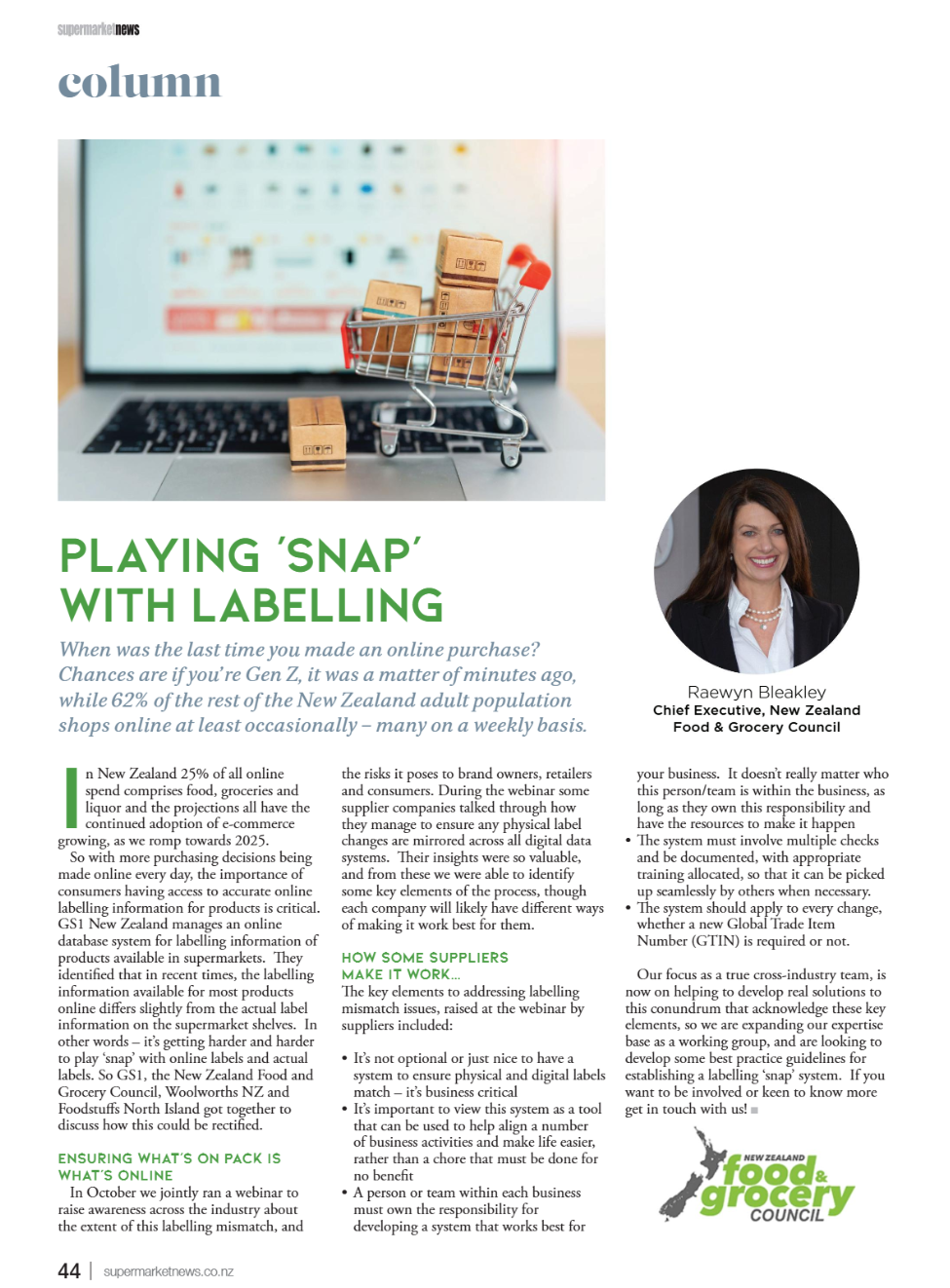Supermarket News Column: Playing ‘Snap’ with labelling
NOVEMBER 2024 – Supermarket News
When was the last time you made an online purchase? Chances are if you’re Gen Z, it was a matter of minutes ago, while 62% of the rest of the New Zealand adult population shops online at least occasionally – many on a weekly basis. In New Zealand 25% of all online spend comprises food, groceries and liquor and the projections all have the continued adoption of e-commerce growing, as we romp towards 2025.
So with more purchasing decisions being made online every day, the importance of consumers having access to accurate online labelling information for products is critical. GS1 New Zealand manages an online database system for labelling information of products available in supermarkets. They identified that in recent times, the labelling information available for most products online differs slightly from the actual label information on the supermarket shelves. In other words – it’s getting harder and harder to play ‘snap’ with online labels and actual labels. So GS1, the New Zealand Food and Grocery Council, Woolworths NZ and Foodstuffs North Island got together to discuss how this could be rectified.
Ensuring what’s on pack is what’s online
In October we jointly ran a webinar to raise awareness across the industry about the extent of this labelling mismatch, and the risks it poses to brand owners, retailers and consumers. During the webinar some supplier companies talked through how they manage to ensure any physical label changes are mirrored across all digital data systems. Their insights were so valuable, and from these we were able to identify some key elements of the process, though each company will likely have different ways of making it work best for them.
How some suppliers make it work…
The key elements to addressing labelling mismatch issues, raised at the webinar by suppliers included:
· It’s not optional or just nice to have a system to ensure physical and digital labels match – it’s business critical
· It’s important to view this system as a tool that can be used to help align a number of business activities and make life easier, rather than a chore that must be done for no benefit
· A person or team within each business must own the responsibility for developing a system that works best for your business. It doesn’t really matter who this person/team is within the business, as long as they own this responsibility and have the resources to make it happen
· The system must involve multiple checks and be documented, with appropriate training allocated, so that it can be picked up seamlessly by others when necessary.
· The system should apply to every change, whether a new Global Trade Item Number (GTIN) is required or not.
Our focus as a true cross-industry team, is now on helping to develop real solutions to this conundrum that acknowledge these key elements, so we are expanding our expertise base as a working group, and are looking to develop some best practice guidelines for establishing a labelling ‘snap’ system. If you want to be involved or keen to know more get in touch with us!

